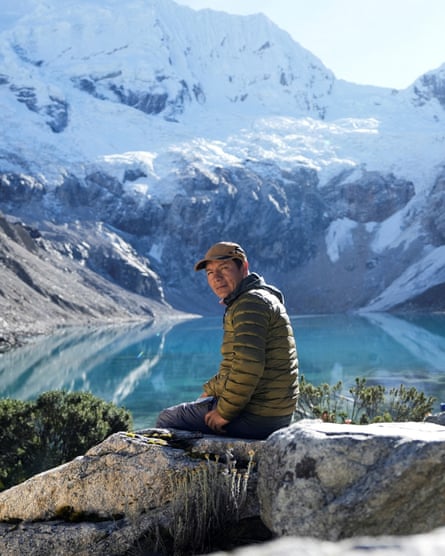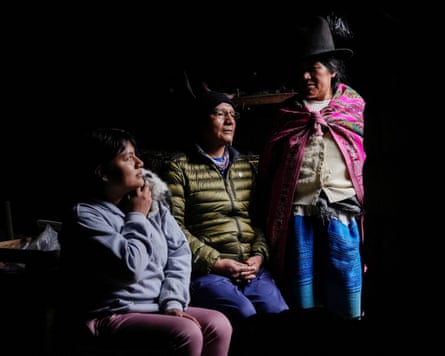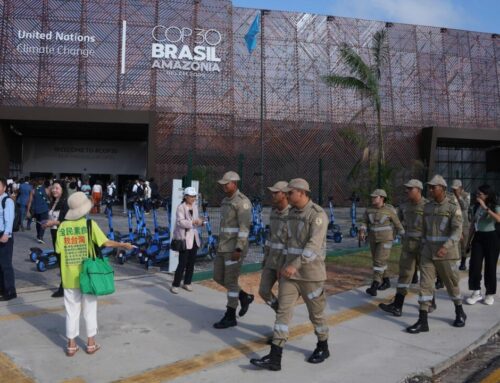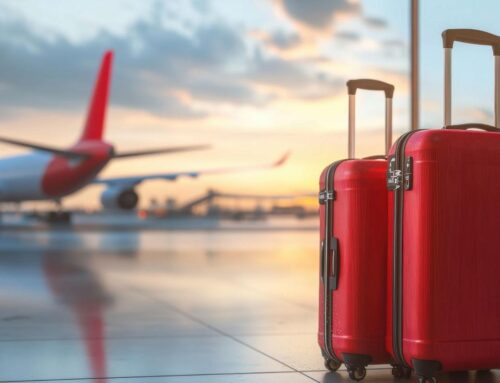‘The glacier is slowly melting, it’s clearly visible’ – This is climate breakdown
November 10, 2025
-
Location Huaraz, Peru
-
Disaster Lake Palcacocha glacier melt
Saúl, a Quechua-speaking mountain guide, farmer and father who lives in the Andean highlands, was the lead plaintiff in a landmark climate lawsuit against the German energy firm RWE. On 28 May, the higher regional court of Hamm dismissed his case on the grounds that there was no concrete threat to Saúl’s home. However, it held that major greenhouse gas emitters could be accountable for the impacts of those emissions under German law.

I was born on a farm in Huaraz Independencia, at an altitude of 3,100 metres. From Huaraz, you can see the mountains. The mountains are up to 6,000 metres high. There’s a snowcapped mountain that can be seen quite close from the farm. It’s called Nevado Churup.
I live in the highlands, near the mountains. I’m the son of small farmers. I’m a farmer and a mountain guide. The fields aren’t easy. Everything is manual, but little by little you adapt. The geography is different: there are slopes here. There are ups and downs. It’s muddy when it rains. It’s very hot when it doesn’t, and there’s plenty of sun. But when you harvest as a child, you already begin to taste the first fruits. Corn, sugar cane, and tender broad beans. You begin to enjoy the countryside.
We have cows in the mountains, in the ravine, here in Quilcayhuanca. You go twice a month, depending on whether the cows are pregnant or not. When they get pregnant, we have to take them out of the ravine because it’s dangerous. A condor or a fox could eat them. The ravine is roughly a 13- to 12-hour walk there and back. It’s a great challenge to go to the mountains from home. I used to go with my sisters, starting when I was eight or 10 years old.
The ravine was different than it is now. I remember there were many more wetlands, it had more life. There were more ducks, other birds, which you don’t see now. I remember birds flying almost like they were in the sea. There was also more grass, there were more waterfalls. Now it’s different. There’s less grass, fewer waterfalls. I remember that when we approached the mountain, I used to see a lot of deer, taruca. Now you don’t see much. There are some, but not as many as before.

The glacier is slowly melting. It’s clearly visible when you’re on the mountain. There are people who live in the city and haven’t visited the mountains. They’ve never been close. As a farmer and as a mountain guide, when you reach a snowy peak and return the following year, and years go by, it impacts you. It makes you feel sorry for the mountains. You feel sad about what’s happening, and it creates a feeling of helplessness, of not being able to do anything about it. If someone has an illness, you treat it, but unfortunately, the mountain can’t be treated. You can’t do anything.
With the passing of time and the melting of glaciers, lagoons have started to form, and the authorities and experts say it’s very dangerous. In the year 1941, the upper part of an avalanche fell into the Palcacocha lagoon and overflowed, causing a mudslide, killing many people. Some say 18,000, others 20,000.
Sometimes there were years when it rained heavily, the rivers were full, you could hear them carrying rocks, and I remember my sister and I would get scared. The neighbours were also scared, and they would say: “That lake burst its banks once and killed a lot of people. We hope the lake doesn’t burst again.”
The glacier has continued melting, growing the Palcacocha lagoon 34 times since the year 1941 when it overflowed. If another flood were to occur, the landslide would flow in the same direction as in 1941.
My grandfather tells me that after the flood, it was prohibited to build houses in that alluvial cone. But little by little, the municipalities began to build, to increase the population. That’s when my parents ended up buying a piece of land in a risk zone. That entire alluvial cone has been repopulated. If a landslide were to occur, my house would be affected, even more so the 50,000 people who live in the risk zone.
Both the authorities and the people don’t know what to do. If this lagoon is dangerous, I think we should work on adaptations and infrastructure to address the risk of the lagoon overflowing, building dams and reservoirs. The community hasn’t received any help. You just stand there, not knowing who to blame, where to complain? We feel abandoned.
Before meeting Germanwatch, we just felt a sense of helplessness. The organisation came when Cop20 was held in Lima in 2014. In 2015, other Germans came to see the lagoon, to talk with me. Germanwatch and I talked about the glaciers and it told me there was a possibility of suing those responsible.

With this lawsuit, we’re putting pressure on RWE to stop polluting. I’ve been told that the RWE company has contributed 0.47% to climate change. All of Peru has polluted less than that amount. The company should be held accountable for causing these risks. If we sue those who contribute to climate change, they would pay to reduce the risks they’ve caused, they would pay for their damages, and they would pay for the consequences. Justice and reparation.
The lawsuit seeks€17,000 (£15,000), which the company must contribute to a project that governments have long been promoting, to build a large, costly dam. I don’t remember the amount, but it’s in the millions. The company must contribute to the construction of the dam to reduce risks.
We started this lawsuit 10 years ago, and according to what I’ve been told during this visit to Germany, there are about 45 or 60 lawsuits pending against other companies that are polluting. That’s good, isn’t it? To hear that the effort, the lawsuit, is somehow paving the way for other lawsuits.
About the series
This is climate breakdown was put together in collaboration with the Climate Disaster Project at University of Victoria, Canada. Read more.
Production team
I think it’s very important; I’m thinking of my family, my parents and my children. Then I also see farmers like me, living in poverty, and they are the ones facing climate change. People who haven’t contributed to climate change are suffering the consequences of climate change.
I truly hope, with this lawsuit, the glaciers don’t melt completely. In some way, their melting rate will be reduced. If the glaciers disappear, it would be a disaster; it would be very tragic for all of us who depend on the mountains, both for farmers and in the city. The mountains and the glaciers are what feed the springs in the valleys far below the mountains. In the city, we also use the water that comes down from the mountains.
The mountains are a whole world. A very different world from what you see on the farm or in the city. I just hope the mountains don’t disappear completely. That’s what I hope and want.
-
Design and development by Harry Fischer and Pip Lev.
Search
RECENT PRESS RELEASES
Related Post



